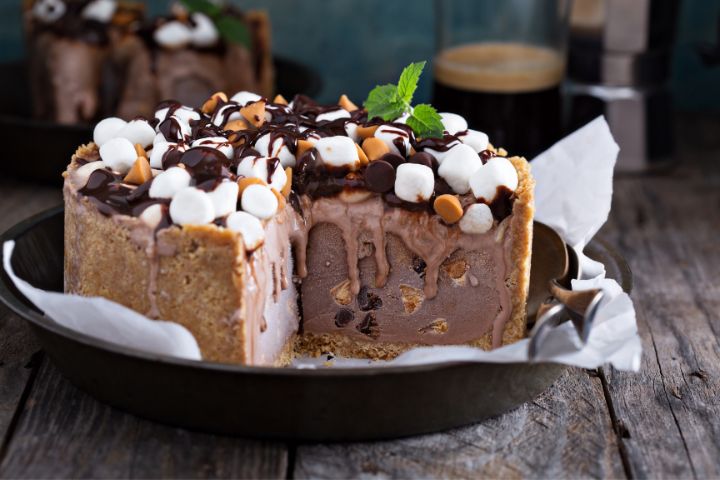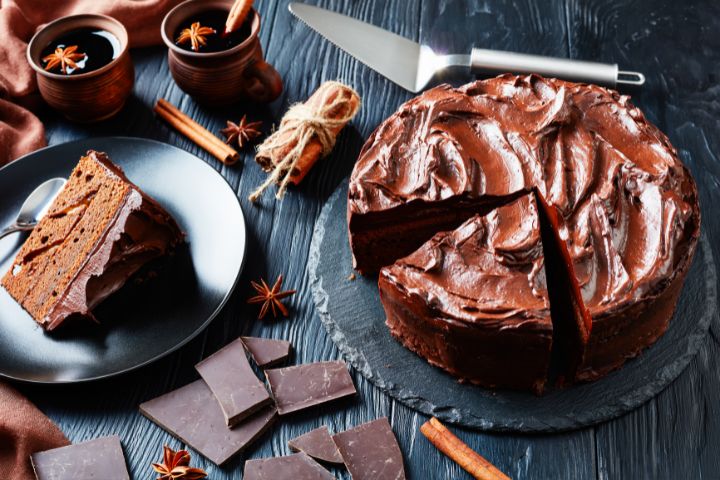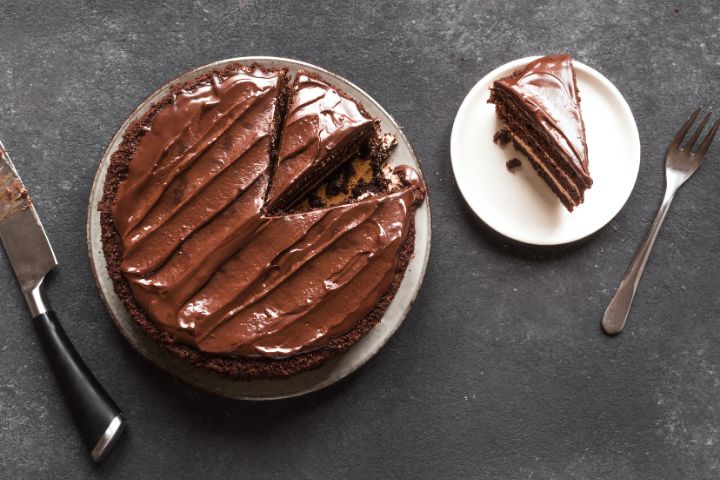Deliciously Unique Ash Cake Recipe
Introduction
Contents
- Introduction
- Brief records of ash desserts
- The importance of ash desserts in diverse cultures
- Understanding Ash Cake Recipe
- Definition and motive of ash desserts
- Traditional strategies for creating ash cakes
- Significance of using ash Cake inside the recipe
- Ingredients and Tools
- List of substances required for ash desserts
- Special equipment or equipment wished
- Step-via-Step Instructions
- Preparing the ash aggregate
- Mixing the dough
- Shaping and cooking the ash desserts
- Variations and enhancements
- Adding Flavors and spices
- Incorporating local or cultural twists
- Gluten-free or vegan options
- Serving and pairing
- Traditional accompaniments for ash cakes
- Suggestions for modern pairings
- Cultural Significance
- The historical and cultural context of ash desserts
- Rituals and celebrations regarding ash desserts
- Health and Nutritional Benefits
- The nutritional profile of ash cakes
- Potential health advantages of certain ingredients
- Common Mistakes to Avoid
- Overusing or underusing ash within the recipe
- Issues with dough consistency
- Proper cooking time and temperature
- Conclusion
- FAQs
Indulge in the delightfully unique flavors of ash cake with our easy-to-follow recipe. In this article, we will discover the fascinating global history of ash desserts and their importance in diverse cultures. From their humble beginnings to their cultural importance, ash cakes have left an indelible mark on culinary traditions around the sector.

Brief records of ash desserts
Ash cake (Recipe) have a rich history that dates back centuries. They were first created by using indigenous communities as a simple and nourishing food source. Over time, the tradition of creating ash desserts has spread to distinct regions and cultures, each incorporating their own precise twists and methods.
The importance of ash desserts in diverse cultures
Ash desserts hold great cultural importance in numerous societies. They symbolize resilience, resourcefulness, and the ability to create sustenance despite restrained sources. Ash desserts have come to be a critical part of rituals, celebrations, and communal gatherings, showcasing the deep-rooted connection between meals and subcultures.
Understanding Ash Cake Recipe
To without a doubt respect ash desserts, it’s vital to comprehend their definition, purpose, and the traditional strategies used in their practice.
Definition and motive of ash desserts
Ash desserts are easy, unleavened bread-like desserts made with an aggregate of ash, flour, and other components. These cakes are normally cooked over an open flame, giving them a completely unique taste and texture. Ash cake (Recipe) had first been crafted as a way to make the most of scarce sources, presenting sustenance in instances of need.
Traditional strategies for creating ash cakes
Native American techniques
Native American communities developed distinct techniques for creating ash desserts. They might collect ash from unique varieties of wood, making sure of its purity and suitability for culinary purposes. The ash could be blended with cornmeal or different grains to create a dough, which was then cooked on hot rocks or within the ashes of a hearth.
African and Caribbean techniques
In African and Caribbean cultures, ash desserts are often regarded by way of one-of-a-kind names, such as “bank” or “fufu.” These variations normally involve fermenting grains or tubers before blending them with ash and other components. The resulting dough is fashioned into small desserts or dumplings and cooked using traditional strategies like steaming or boiling.
Significance of using ash Cake inside the recipe
The inclusion of ash in ash cake (Recipe) serves more than one function. Firstly, it acts as a natural leavening agent, supporting the dough’s rise and giving it a lighter texture. Secondly, the alkaline properties of the ash can enhance the dietary value of the cake by making positive vitamins more bioavailable. Additionally, ash adds a distinct smoky flavor that distinguishes ash desserts from other bread-based dessert recipes.
Ingredients and Tools
Before embarking on the ash cake recipe adventure, it’s crucial to collect the important ingredients and tools.
List of substances required for ash desserts
To make ash cakes, you may want:
Ash is obtained from hardwood assets like oak, maple, or birch.
Flour: opt for a flexible choice like several-cause flour or experiment with specific grains for precise flavors.
Additional substances: salt, water, and any elective add-ins for flavor versions
Special equipment or equipment wished
Fire pit or stove
To cook ash cake (Recipe) traditionally, a fireplace pit or stove is vital. The open flame gives the cakes the specified warmth to cook dinner to perfection. However, contemporary diversifications allow for alternative cooking techniques like grilling, baking, or frying.
Mixing bowl and utensils
A strong blending bowl and utensils are necessary for combining the substances and forming the dough. Wood or stainless steel utensils are perfect for maintaining authenticity and warding off any undesirable reactions to the ash.
Cast-iron skillet or baking pan
When using contemporary cooking methods, a solid iron skillet or baking pan is suggested for attaining a crispy exterior or even cooking.
Step-via-Step Instructions
Now that we’ve accrued the important ingredients and equipment, let’s dive into the step-by-step manner of making scrumptious ash desserts.
Preparing the ash aggregate
Choosing the proper type of ash
Select hardwood ash from reliable sources. Avoid ash from treated or resinous woods, as they may introduce unwanted flavors or chemical substances into the recipe.
Preparing and filtering the ash
To make sure the ash is free of impurities, place it in a satisfactory-mesh sieve or cloth and rinse it thoroughly. This technique allows you to do away with any lingering debris or contaminants.
Mixing the dough
Combining flour and ash
In a blending bowl, integrate the preferred amount of flour with the prepared ash. The ratio of flour to ash can vary totally based on personal choice and the preferred texture of the cakes. A common starting line is one part ash to three parts flour.
Adding extra elements
Add a pinch of salt to beautify the flavors and water to the flour and ash combination. Gradually include the water while kneading the dough until it reaches a cohesive and slightly sticky consistency. Adjust the water quantity as needed.
Shaping and cooking the ash desserts
Forming the dough into patties
Divide the dough into man or woman quantities and form them into small, round patties or desserts. The thickness can be adjusted based totally on personal desire, but the goal should be a uniform length to ensure even cooking.
Cooking methods (grilling, baking, or frying)
Traditionally, ash desserts are cooked over an open flame. Place the cakes directly on hot rocks or a heated cast-iron skillet, making sure they have even exposure to warmth. Rotate the cakes as desired until they have a golden brown crust and are cooked through.
Alternatively, contemporary diversification allows for numerous cooking methods. You can grill the cakes on fish fry, bake them in an oven, or fry them in a pan with a touch of oil till they attain the desired color and texture.
Variations and enhancements
While ash desserts are delightful in their conventional form, experimenting with flavors and local influences can provide thrilling variations.

Adding Flavors and spices
To increase the taste of ash desserts, keep in mind incorporating different flavors and spices. Try adding herbs like rosemary or thyme, spices like cumin or paprika, or maybe sweet additions like cinnamon or nutmeg.
Incorporating local or cultural twists
Explore the culinary traditions of numerous cultures that include ash cakes. Discover specific mixtures of substances, strategies, and flavor profiles and adapt them to your liking.
Gluten-free or vegan options
For people with particular nutritional choices or regulations, ash cakes can be changed to meet gluten-free or vegan requirements. Experiment with opportunity flours like rice flour, almond flour, or chickpea flour, and update animal-derived substances with suitable options.
Serving and pairing
To clearly respect the flavors and textures of ash desserts, consider serving them with complementary accompaniments.
Traditional accompaniments for ash cakes
Ash cake (Recipe) are often loved with quite a few accompaniments, which include:
Butter or ghee: The richness of butter or ghee adds a lovely assessment to the smoky taste of the desserts.
Jam or honey: Sweet toppings offer a burst of taste and stability to the earthy tones of the ash desserts.
Savory spreads: Pair ash desserts with savory spreads like hummus, salsa, or guacamole for a stronger culinary experience.
Suggestions for modern pairings
For a cutting-edge twist, discover current pairings, which include:
Avocado slices and poached eggs: The creaminess of avocado and the indulgence of poached eggs create a tasty mixture.
Smoked salmon and cream cheese: The smokiness of the salmon enhances the ash desserts, while cream cheese adds a luscious texture.
Grilled greens and tzatziki: Enjoy the wholesome flavors of grilled vegetables paired with the fresh tang of tzatziki sauce.
Cultural Significance
Delving into the cultural significance of ash cakes reveals the rich tapestry of records and traditions associated with this humble food.
The historical and cultural context of ash desserts
The roots of ash cakes can be traced back to indigenous groups that used them as a staple food supply. Over time, the lifestyle unfolds throughout exclusive cultures, symbolizing resilience, adaptability, and the capacity to make the most of constrained resources.
Rituals and celebrations regarding ash desserts
Ash cakes often play an outstanding role in rituals and celebrations. They can be served in the course of harvest fairs, as offerings to deities, or as an image of communal unity at unique gatherings. The act of making and sharing ash cakes turns into a significant cultural revel that fosters connections and preserves background.
Health and Nutritional Benefits
Beyond their cultural importance, ash desserts provide certain fitness and nutritional benefits, making them a wholesome addition to the culinary repertoire.
The nutritional profile of ash cakes
Ash cake (Recipe) offer a balance of macronutrients, along with carbohydrates from the flour, crucial minerals from the ash, and a modest amount of protein. The unique nutritional composition may additionally vary depending on the components used and the cooking approach employed.
Potential health advantages of certain ingredients
The inclusion of ash inside the recipe may contribute to multiplied mineral intake, as ash carries hint quantities of essential minerals like calcium, potassium, and magnesium. Additionally, using whole grains in ash desserts affords nutritional fiber, promotes digestive fitness, and supplies a feeling of satiety.
Common Mistakes to Avoid
To ensure first-class consequences while making ash desserts, it’s important to be aware of common pitfalls and how to avoid them.
Overusing or underusing ash within the recipe
Achieving the appropriate stability of ash inside the dough is important. Overusing ash can result in a very alkaline flavor, while underusing it may no longer provide the desired leavening effect and flavor. Experiment with special ratios to locate the stability that suits your palate.
Issues with dough consistency
The consistency of the dough plays a critical role in the final results of the ash cake (Recipe). Aim for a barely sticky and pliable dough that holds its shape while shaped into patties. If the dough is simply too dry, progressively add extra water, and if it’s too wet, add small amounts of flour till the preferred consistency is reached.
Proper cooking time and temperature
To ensure even cooking and an acceptable texture, it is critical to cook the ash desserts at the correct temperature and for the right quantity of time. Be responsive to the heat source and modify it as needed to avoid burning or undercooking.
Conclusion
In the end, ash desserts stand as a testament to the ingenuity and resourcefulness of numerous cultures throughout history. With their humble substances and rich cultural importance, ash desserts retain their ability to encourage and satisfy. Whether prepared traditionally or with cutting-edge twists, those specific culinary creations provide a window into the various tapestries of worldwide meal traditions. So, roll up your sleeves, acquire your ingredients, and embark on a flavorful adventure by means of growing your very own batch of delicious ash desserts. Embrace the records, enjoy the flavors, and celebrate the cultural history they constitute.

FAQs
Can I use any kind of wood ash?
While it’s feasible to use exclusive forms of wood ash, it’s better to stick with hardwood sources such as oak, maple, or birch. Avoid the use of ash from treated or resinous woods, as they will introduce unwanted flavors or chemicals into the recipe.
Can I make ash cakes with gluten-free flour?
Yes, ash desserts can be made with gluten-free flour alternatives. Experiment with gluten-unfastened options like rice flour, almond flour, or chickpea flour to accommodate dietary regulations or choices.
How long can ash cake (Recipe) be saved?
Ash cakes are fine when loved and kept clean, but they can be saved for a brief duration. Allow them to chill completely before storing them in a hermetic field. They may be stored at room temperature for up to two days or refrigerated for 3–4 days. However, observe that their texture might also change slightly upon refrigeration.
My ash desserts are too dense. What could be the problem?
If your ash cakes are turning out dense, it could be due to numerous elements. Ensure that you are using a precise ratio of ash to flour and that the dough is adequately kneaded. Overworking the dough or using too much ash can result in a dense texture. Experiment with adjusting the ratio and kneading technique to gain a lighter consistency.
My ash cakes have a sour flavor. How can I save you from this?
A bitter flavor in ash cakes may be a result of the use of ash that contains impurities or too much ash. Make certain to select high-quality ash from hardwood resources and rinse it very well to remove any contaminants. Additionally, modify the amount of ash used in the recipe to achieve a balanced flavor.
My ash desserts are burning outside but staying undercooked internally. What must I do?
If your ash cakes are burning on the outside while remaining undercooked inside, it suggests that the heat source may be excessive or unevenly dispersed. Adjust the heat level to medium or move the desserts to a cooler part of the grill or pan. Alternatively, you can pre-cook the desserts at a lower temperature and finish them off with a higher heat for a golden crust.






